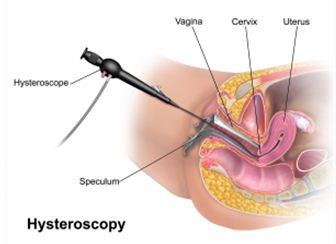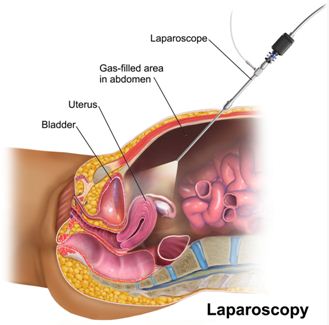Hysteroscopy/ Laparoscopy
Hysteroscopy is a procedure that allows your doctor to look inside your uterus in order to diagnose and treat the causes of abnormal bleeding. Hysteroscopy is done using a hysteroscope, a thin, lighted tube that is inserted into the vagina to examine the cervix and inside of the uterus.

Hysteroscopy can be either diagnostic or operative.
Diagnostic hysteroscopy is used to diagnose problems of the uterus.
Operative hysteroscopy is used to correct already diagnosed conditions of the uterus like polyps and fibroids, adhesions (also known as Asherman’s Syndrome),uterine septum and abnormal Bleeding :
Laparoscopy is a way of performing surgery. Instead of making a large incision (or cut) for certain operations, surgeons make tiny incisions and insert thin instruments and a camera into an area, such as into the abdomen, to view the internal organs and repair or remove tissue.

With laparoscopy, tiny fiber-optic instruments are inserted into the body through small surgical openings (thus the name “keyhole”). A person may have one or more small incisions. A video camera is inserted into the opening, which guides the surgeon who is manipulating the instruments in any other openings. Sometimes, only one incision is used and all the instruments are placed into it. This is called single incision laparoscopic surgery or SILS. On the ends of these instruments are such devices as scissors, surgical staplers, scalpels, and sutures (stitches).
